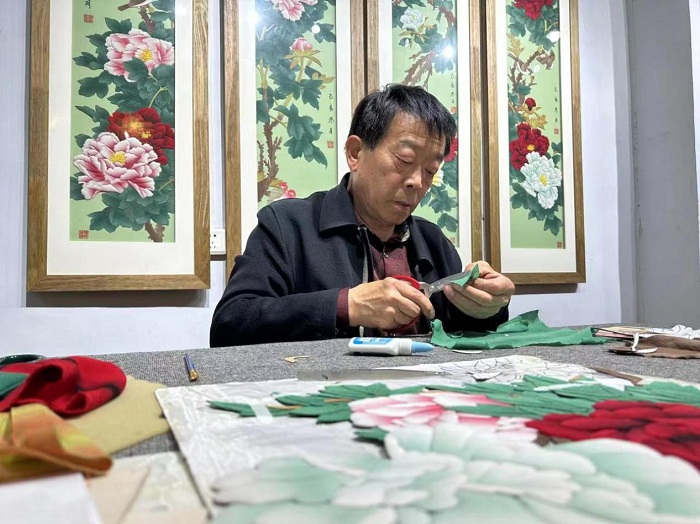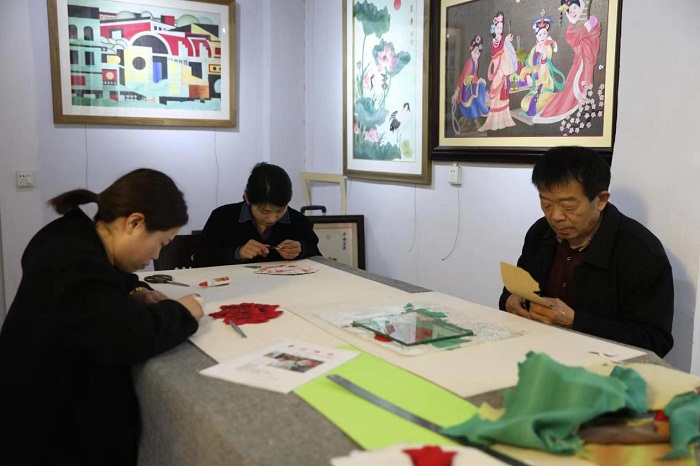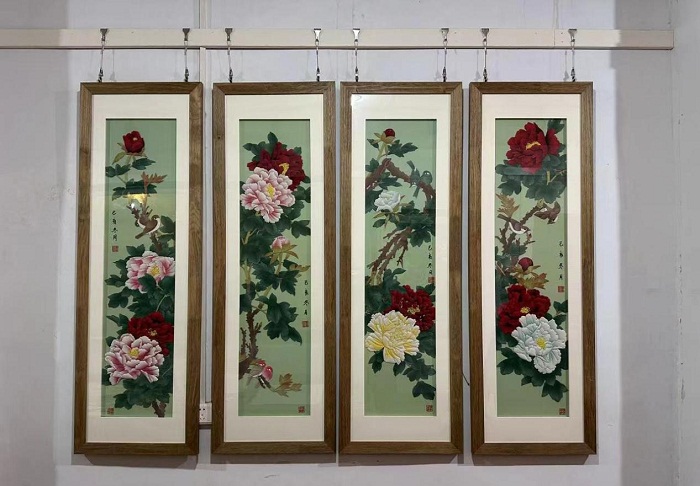Artist brings extraordinary embroidered works alive
Efforts made by artist Liu Xiantang in inheriting and developing a version of the duixiu – or piled-embroidery – technique are said to be really paying off, with the ancient craft is attracting more and more fans and catering to the modern market.

Liu Xiantang works deftly on a piece of duixiu artwork. [Photo by Yan Xiaona provided to chinadaily.com.cn]
Liu is the seventh-generation inheritor of Caozhou Duixiu, an intangible cultural heritage item, in the Dingtao district of Heze city, in East China's Shandong province. This variant of duixiu is named after Caozhou, the ancient name for Heze.
The duixiu technique, which requires meticulous skill to cut silk fabrics into various shapes and attach them to a painting to create a three-dimensional effect, dates back to Tang (618-907) and Song (960-1279) dynasties and flourished in the Ming (1368-1644) and Qing (1644-1911) dynasties and it has been handed down in Dingtao district for over 400 years.
"There are many places in China that have similar piled embroidery, but some of them are made of cloth only in key parts and the rest is painted," Liu said.
"The biggest difference with Caozhou Duixiu is that the whole work is made of cloth, which makes them more vivid and three-dimensional," he added.

Liu Xiantang and his students concentrate on creating a duixiu work. [Photo by Li Dandan provided to chinadaily.com.cn]
To better pass on the art, Liu studied dyeing from scratch – as Caozhou Duixiu requires very exact dyeing of fabrics. But the amount needed for each work was relatively small, so he could not find a suitable raw materials supplier at the beginning.

Liu Xiantang's works are mainly themed on the peony flower, as Heze is known as the "Peony Capital of China". [Photo by Yan Xiaona provided to chinadaily.com.cn]
Since the original piled-embroidery works had traditional themes that did not appeal to the modern tastes of young people, Liu developed a series of works – including large-size peony-themed works and small-size works featuring a wide variety of other themes. (Edited by Jin Yongxue)








